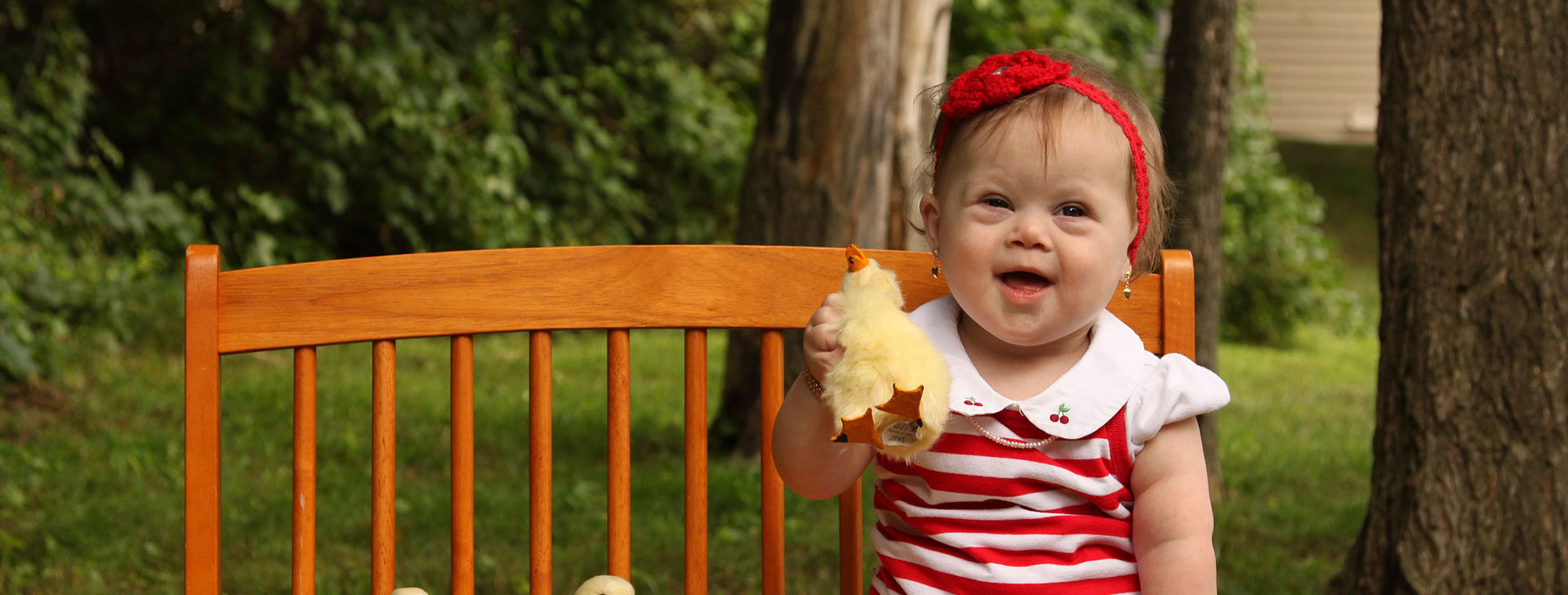Nicole Baumer, MD, MEd
Neurodevelopmental Disabilities
Department of Neurology & Developmental Medicine Center
Boston Children’s Hospital
Harvard Medical School
Boston, Massachusetts
Dr. Baumer is a child neurologist and neurodevelopmental disabilities specialist. Dr. Baumer is the Director of the Boston Children’s Hospital Down Syndrome Program.
Infantile Spasms in Down Syndrome
Infantile (Epileptic) Spasms represent the most common epilepsy syndrome in Down syndrome. Infantile Spasms usually occur in the first year of life, but may present later, particularly in children with Down syndrome. Compared with the general population, there is a higher risk of infantile spasms in babies with Down syndrome. Although the cause is largely unknown, it may be due to inherent genetic features, brain structure differences, or associated health conditions such as heart conditions / cardiovascular factors, or acquired injury to the brain due to stroke, low oxygen, or infection.
The spasms are characterized by abnormal movements of the body, usually involving sudden bending of the body forward or backward, and stiffening of the arms and legs. These can occur in repeated clusters (several times in a row). It may look like exaggerated startle responses but the movements are not provoked. Spasms may be quite subtle in babies with Down syndrome and may be mistakenly attributed instead to gastroesophageal reflux, hypotonia, pain, or repetitive mannerisms, sometimes leading to a delay in recognition. Often, there is an associated plateau in development (i.e. lack of developmental gains) or regression (loss of skills) involving motor, communication, and / or social skills, which is sometimes the main concern that prompts families to seek evaluation. Developmental concerns may include less babbling, less eye contact and smiling, or decreased head control and tone. Sometimes, these symptoms are misattributed to expected developmental delays in Downn syndrome, or to other causes such as hearing or vision problems. However, infantile spasms should be considered in any baby with Down syndrome who presents with developmental plateau or regression.
The diagnosis of infantile spasms is made by electroencephalogram (EEG), which measures the electrical activity of the brain. The EEG shows a characteristic pattern of abnormal brain waves – disorganized background activity called hypsarrhythmia or modified hypsarrhythmia – which confirms the diagnosis. The hypsarrhythmia may be more pronounced in sleep, so it is very important to have the EEG capture sleep, especially early in the course of infantile spasms. The EEG may also show a specific change in the brain waves during the abnormal movements or spasms.
Treatment for infantile spasms typically involves hormonal treatment (ACTH or steroids) as the preferred first choice, or Vigabatrin, and antiepileptic medication. Other treatments may be used in some circumstances. It is generally believed that children with Down syndrome and infantile spasms have a better response to treatment and better neurodevelopmental outcomes than other children with infantile spasms.
Seizure outcomes
The goal of the treatment for infantile spasms is to stop the seizures as quickly as possible, as well as resolution of hypsarrhythmia. For some babies with infantile spasms, seizures will return after treatment (relapse) or evolve into an epilepsy syndrome known as Lennox-Gastaut syndrome, a type of epilepsy with multiple seizure types that are difficult to treat with seizure medicine. Fortunately, children with Down syndrome who have Infantile Spasms often respond very well to treatment, and are less likely than those without Down syndrome to relapse, or to develop Lennox-Gastaut syndrome. Early detection and treatment of infantile spasms likely improves seizure outcomes. Some research has shown that the sooner treatment is started after seizure recognition, the faster the seizures will resolve with appropriate treatment, and the less likely there will be for a relapse of seizures. However, there are no definite ways to predict how a baby will respond to treatment. Therefore, close monitoring is very important to ensure that hypsarrhythmia has resolved, and that there is no return of seizures.
Neurodevelopmental Outcomes
Even with appropriate treatment and good seizure control, infantile spasms can have a detrimental effect on development. Infantile spasms have been associated with developmental delays, subsequent cognitive impairment, and higher risk of autism spectrum disorder. However, it is difficult to assess the neurodevelopmental impact of infantile spasms in children with Down syndrome because they have pre-existing developmental delays, and a wide range of cognitive, language, and social abilities. Factors that have been reported to result in worse neurodevelopmental outcomes in children with Down syndrome include a delay in recognition and initiation of treatment, poor seizure outcomes (recurrent seizures), and the presence of significant developmental regression for a prolonged time prior to treatment initiation. However, not all research studies have shown these factors to contribute to differences in developmental outcomes, and further research is needed. While initial treatment efforts should prioritize seizure treatment and control, it is also essential that interventions address developmental concerns. Children with Down syndrome and infantile spasms should also receive intensive developmental therapies in order to support developmental progress and improve neurodevelopmental outcomes.
Recommendations To Improve Outcomes:
- Successful outcomes in children with Down syndrome and infantile spasms may depend on prompt recognition, evaluation, diagnosis, and treatment.
- Because treatment lag may be a modifiable factor in influencing outcomes, it is essential to provide outreach and education to families about infantile spasms.
- While there are many alternative potential causes of abnormal movements or developmental concerns in Down syndrome, families and clinicians should be vigilant for any symptoms suggestive of infantile spasms, and should investigate all concerns quickly and thoroughly.
- Children with Down syndrome and infantile spasms should receive early appropriate treatment with first-line treatments for infantile spasms.
- Close developmental monitoring, and ongoing developmental and educational assessments can help to identify those children with Down syndrome and infantile spasms who may need more intensive therapies and supports.

